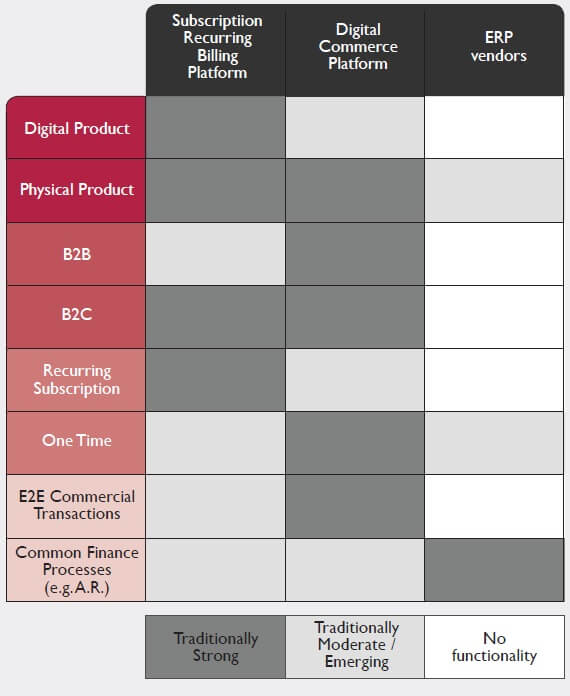The world of billing is increasingly complex and dynamic. How best do you not only drive for efficiency but also optimize customer contact and information to unlock greater value and growth for your business?
Billing is an essential part of every business, but all too often it is relegated to the back office. Companies seem happy to file it away as a necessary but far from core activity, one that, at most, has to be done as efficiently as possible.
Look a little deeper however at the order-to-cash process and you can see just how critical billing is – not just for getting paid on time but also for building customer relationships and enabling growth.”
It is vital therefore to make sure your billing system is far more than simply efficient: it should be geared up to properly support the success of your business. In short, you need to optimize your billing. However, given the complexities, this is easier said than done. In this article we outline the challenges, pinpoint the potential and take you through the technology options that form a key part of the solution.
Think customer
Billing’s not just about issuing invoices and getting the money in – it is a key customer touch point, moreover a highly sensitive one. When you’re billing, you’re communicating with customers. You’re building the relationship, influencing the customer’s view of your business and your brand. And you’re gaining valuable information about your customers – understanding the bill-toview not just the ship-to view. So if you truly believe in delighting your customers and delivering a great customer experience, you should care about billing.
Digital transformation
Billing is one of the areas that has been strongly affected by digital transformation. The increasing digitization of products and services and the growth of digital platform-based business models and ecosystems has had a huge impact on billing. When your products or services move from a physical world to a digital world that often changes the way you bill for them. Indeed the impact goes deeper, fundamentally changing the financial model for how you not only bill for services but provide them.
A classic example is music, which has evolved from the old way of buying and owning single physical CDs or records purchased in bricks and mortar stores, through to downloading digital versions and on to streaming, rather than owning, music.
Navigating the complexities
We can plot the billing complexities across three key dimensions. The first dimension covers whether you are billing businesses (B2B) and/or individuals (B2C); the second, whether you are selling physical products and services and/or digital products and services; and the third, whether you are selling on a buy-to-own (one-off purchase) and/or a buy-to-use (subscription) model.
Two big value generators
Businesses of all kinds are keen to secure two big value-generating capabilities: the ability to gain a single holistic view of each customer, and the ability to bundle products and cross-sell to customers.”
With a single view of your customer, you can gather and make the most of a wealth of data, on what the customer spends, how they pay, when they pay and so on. This forms the foundation for broader, deeper customer insights to help you sell more and build stronger customer relationships. What’s more, one bill is not only easier to manage, it’s also less hassle for customers – so they welcome it, too.
The ability to sell bundles of products and services to customers across lines of businesses is increasingly a key way to grow in many different sectors. Indeed, the inability to do so can be a serious blocker to growth. In an age of new, fleet-of-foot, digital disruptors overturning the status quos of many different markets and sectors, not being able to offer bundles of products and services because your fragmented billing systems can’t cope is a serious, potentially strategic, handicap.
Think horizontal
So how do you unlock the value? Both single customer views and product bundles are supported and enabled by having one billing system that crosses all the business units. We call this horizontal billing.
For a few lucky businesses, it’s easy to go horizontal. They have pretty similar, fairly static products or services sold and paid for in the same way.
But for most businesses, life is more complicated (or more interesting, as we like to think of it). They have a rich mix across the three billing dimensions. Their complexities and the particular differences across their business lines drive them towards individual billing systems for individual business units, in order to synch their billing closely with their core activities. We call this vertical billing.

Pursuing the value
While many businesses, for understandable reasons, have tended to gravitate towards vertical billing systems, there is a real need and desire to gain the value-generating benefits of a horizontal system.
This is the heart of the billing dilemma; one we help our clients navigate. We are, for example, currently working with a media client to help them secure the benefits of horizontal billing despite a super-complicated landscape of diverse physical and digital products sold to individuals and businesses through a myriad of one-off and subscription based payment options.
Finding the best billing solution
We can help in a number of ways, from advising on structuring your billing organization to streamlining your processes. The technology you choose is also fundamental and we’re focusing on this aspect here.
The vertical billing route might still be right for a client. As a truly independent client-focused consultancy we look seriously and smartly at this and if it makes the most sense for a client to stay or go vertical, we would recommend that. And as we’ll see later, there may still be a way to build links across vertical systems to access the benefits of a horizontal approach.
Going horizontal
What are the options for going horizontal and implementing a more joined up multi-business-line billing system? There are three main groups: ERP platforms; digital commerce platforms; and subscription and recurring billing platforms.
ERP platforms have been around the longest. As such they are mature, tried and tested platforms designed to provide all the software you need in one box, from HR to CRM to billing. They work well when there is not a high degree of variety across the three billing dimensions. They are strongest for B2C, physical products and owned/pay-once purchases.
Digital commerce platforms emerged in the original eCommerce era. They are relatively mature, work well at scale and generally come with everything you need to do digital commerce. The products tend to be designed for either B2B or B2C, but not both. Like ERP platforms, they tend to be strongest for physical products and one-time payments rather than ongoing subscriptions.
Subscription and recurring billing platforms are a newer family of products. What are they good at? There’s a clue in the name! As well as being specifically designed for recurring subscriptions, they are notably stronger for B2C than B2B, but they do typically offer support for both digital and physical products.
All these product categories are evolving fast, however, and these broad comparisons may not apply in every niche, so there is no substitute for taking a careful look at the market.

As you can see, there may currently be no single winner when you are looking to implement a horizontal billing solution. Particularly, as is often the case, if you have a messy mix of B2B and B2C customers, physical and digital products, and one-off and subscription payments.
Picking a winner
So what are your options? The first option is based on the fact that both digital commerce platforms and subscription and recurring billing platforms are evolving fast to become stronger and broader in their capabilities. Moreover, there are some emerging products that are effectively hybrids of the two.
It’s a dynamic, highly fluid market. You need to look carefully at the products, with a clear understanding both of their limitations and potential and the complexities of your own business. That way you may be able to identify one that fits well enough now and is also evolving in the right direction for you. We can help you carry out this analysis and make an informed decision.
Building links
The second option is not to try and go for one single product. Instead, invest in a mix and secure the benefits of horizontal billing in a different way, by building links across your billing systems.
Both options require a real understanding of your business and the fast evolving billing options out there. Given the complexities and the fast pace of change, gaining the benefits of horizontal billing is never going to be easy. But with the right help it is possible, and certainly the potential to increase value and unlock greater growth for your business makes it a matter to explore fully and smartly. We’d love to help.










